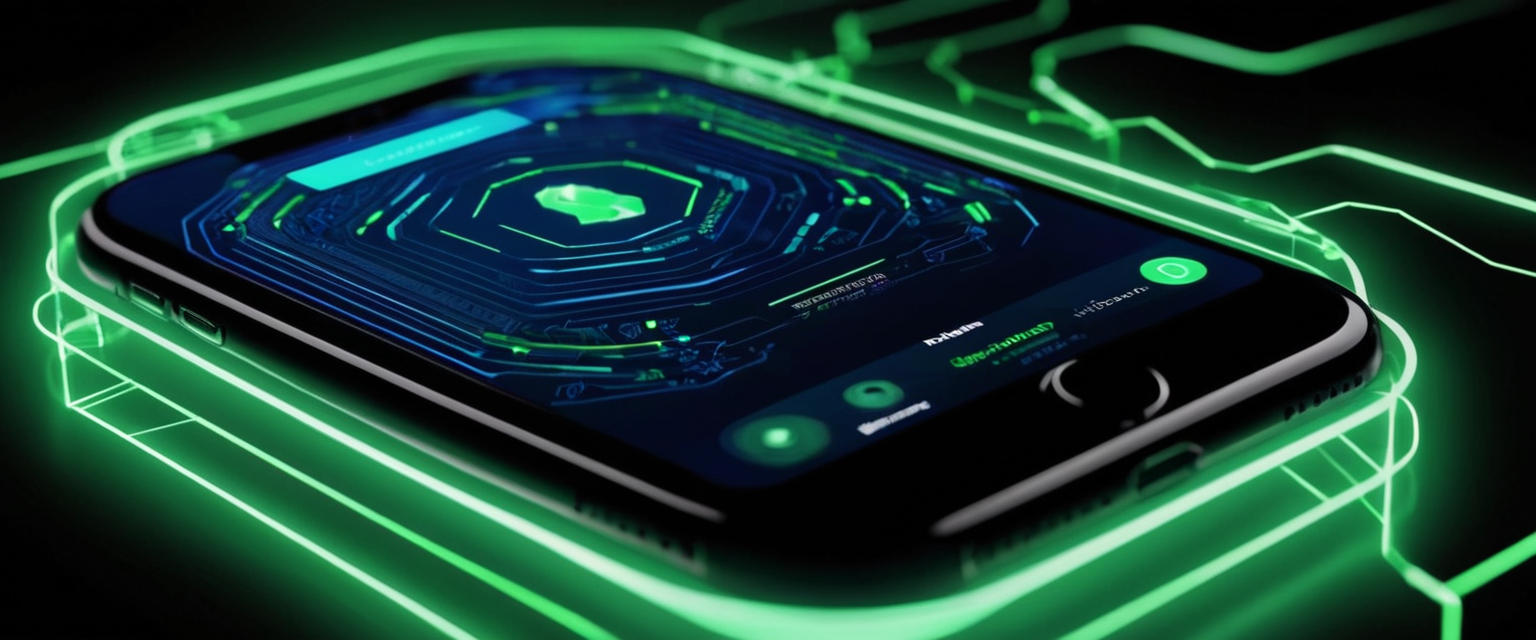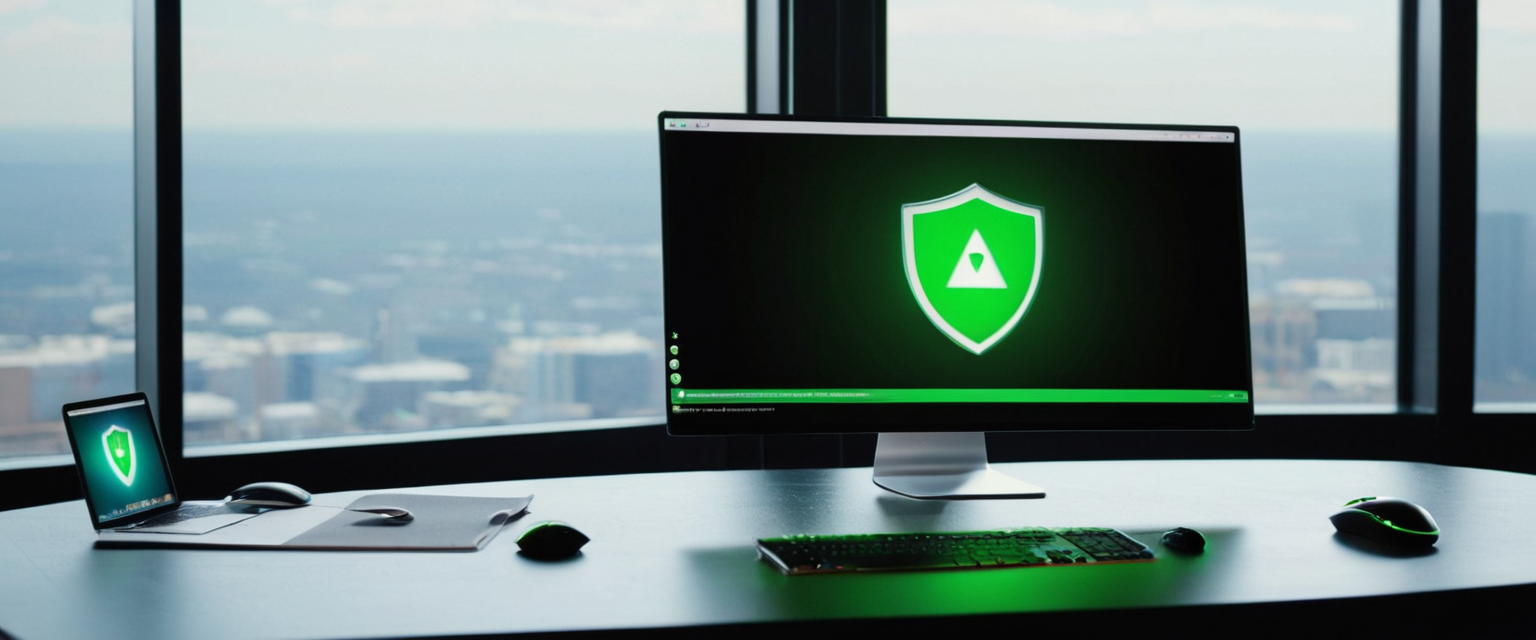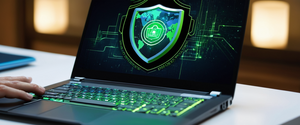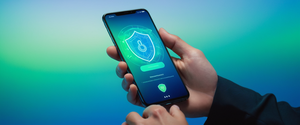
One of the most significant misconceptions about iPhone security is that users can perform traditional malware scans similar to those available on computers or Android devices. The reality is considerably more nuanced and technology-specific. While iPhones possess some of the most robust security architectures in the consumer electronics industry, the mechanisms that create this security simultaneously prevent the execution of comprehensive system-wide malware scans. This report provides a detailed examination of malware scanning on iPhones, exploring the technical limitations, alternative detection methods, legitimate third-party tools, and practical strategies for protecting your device against genuine threats in an increasingly sophisticated cybersecurity landscape.
Understanding iPhone’s Security Architecture and Why Traditional Virus Scans Are Not Possible
The foundation of iPhone security rests on several interconnected architectural decisions made by Apple that fundamentally differ from computer operating systems or Android devices. To comprehend why traditional malware scanning is impossible on iOS, it is essential to first understand how Apple has designed the operating system from the ground up to prevent unauthorized access and limit the damage from compromised applications. The iOS operating system implements a security model that is entirely different from traditional computing environments, and this difference is precisely what makes scanning procedures as they exist on Windows or macOS impossible to replicate.
Apple’s iOS employs a mandatory access control mechanism known as the sandbox, which is enforced at the kernel level and has been a core security feature since the first release of iOS. Every third-party application that runs on an iPhone operates within its own isolated container or sandbox, which restricts access to that application’s own files and a very limited number of system APIs. This sandboxing architecture means that individual applications cannot access files or resources belonging to other applications, even if they are owned by the same user at the operating system level. The implications of this design are profound: even if a malicious application were somehow installed on your device, it would be prevented from accessing critical system files, other applications’ data, or sensitive user information stored outside of its designated container.
The restrictions imposed by iOS sandboxing extend to the fundamental operations of code execution itself. The operating system modifies standard system calls such as mmap and mmprotect to prevent applications from making writable memory pages executable, which effectively stops processes from executing dynamically generated code. When combined with code signing requirements and Apple’s FairPlay protection scheme, this creates a situation where all code running on an iPhone must be approved by Apple before execution in most cases, particularly for applications distributed through the official App Store. This is fundamentally different from traditional computers where users can execute arbitrary code downloaded from the internet.
Because of these architectural constraints, applications installed from the App Store cannot perform the type of comprehensive system scans that antivirus software on computers can perform. A traditional antivirus application needs the ability to traverse the entire file system, access system memory, inspect running processes, and examine files in locations throughout the operating system. The iOS sandboxing model explicitly prevents third-party applications from having this level of system access. Therefore, when antivirus companies offer applications for iOS through the App Store, those applications cannot truly scan the operating system in the way users might expect based on their experience with desktop security software.
This architectural reality creates a fundamental paradox: the very security mechanisms that make iOS inherently resistant to malware also make it impossible for independent security applications to verify that malware is not present. Apple has chosen to prioritize the security of the system over the ability to provide visible evidence of that security through traditional scanning mechanisms. This is a deliberate trade-off where the company has decided that the automatic protections built into the iOS operating system provide sufficient security for the vast majority of users without requiring additional scanning capabilities.
The Reality of Malware Threats on iPhone: Separating Fact from Fear
While it is accurate to state that traditional virus scans cannot be performed on iPhones, it is equally important to address the question of whether iPhones actually get malware, as this question directly influences how concerned users should be about the need for scanning. The reality is considerably more reassuring than many security vendors and alarmist headlines suggest, though it is not absolute. iPhones can technically get malware, but the circumstances under which this occurs are highly specific, and the frequency is extremely low compared to other computing platforms.
For a non-jailbroken iPhone that has not been modified through sideloading or other unauthorized means, the risk of malware infection is genuinely very minimal. The architectural protections built into iOS are so comprehensive that malware operating under standard iOS restrictions cannot spread from one application to another, cannot modify the operating system, and cannot access sensitive user data without explicit permission. The historical track record supports this assessment: there are essentially no known cases of self-propagating viruses in the wild affecting non-jailbroken iPhones, unlike the situation that has plagued other platforms since the early days of computing.
The primary malware risks that do exist for iPhone users fall into several specific categories rather than the general threats that computer users face. First, a compromised application that somehow makes it past Apple’s review process could potentially exploit unknown vulnerabilities to gain access beyond its sandbox. However, Apple’s review process is stringent, and such applications are typically identified and removed quickly when discovered. Second, users can be targeted by sophisticated zero-click attacks or other highly advanced exploits if they are valuable targets to state-sponsored attackers or mercenary spyware operators. These attacks, such as the infamous Pegasus spyware or Operation Triangulation, represent the absolute pinnacle of cyber capability and cost millions of dollars to develop, making them relevant only to a tiny subset of individuals like journalists, activists, politicians, and diplomats. Third, users can fall victim to phishing attacks and social engineering schemes that trick them into revealing information or entering credentials on fake websites, though this is a user behavior issue rather than a malware infection.
Phishing deserves particular attention because it represents one of the most significant actual threats to iPhone users and is often confused with malware by users who see suspicious pop-ups or messages. When a user receives a pop-up warning that their iPhone is infected with a virus and directing them to install an antivirus app or call a support number, this is almost certainly a phishing scam rather than evidence of actual malware. These fake security alerts are designed to frighten users into taking actions that compromise their security, such as downloading a malicious profile, entering their Apple ID credentials on a fake login page, or calling a phone number staffed by scammers who will social engineer them into revealing sensitive information. The appearance of these pop-ups is often triggered by visiting suspicious websites, not by malware on the device itself.
Why Third-Party Antivirus Applications Cannot Perform True Malware Scans
The antivirus and mobile security industry has adapted to the iOS environment by offering applications that perform specific security functions within the constraints of the sandboxed environment. However, it is crucial to understand exactly what these applications can and cannot do, as this understanding directly impacts whether they are worth installing and what value they provide. The limitations are substantial and important to appreciate.
Third-party antivirus applications available in the Apple App Store cannot and do not perform comprehensive system scans of your iPhone because iOS prevents any application from accessing the areas of the device where malware would need to hide. These applications are blocked by the same sandboxing mechanisms that prevent malware from spreading, creating a situation where antivirus software on iOS cannot be more powerful or invasive than the malware threats it is meant to detect. If an antivirus app could scan those protected areas, then in theory, a malicious app could as well, which would violate Apple’s security model.
The antivirus applications available for iOS instead focus on specific functions that are possible within the constraints of the sandboxing environment. These functions typically include web protection through safe browsing features that block access to known phishing and malware-hosting websites, breach notification services that alert users if their credentials have appeared in known data breaches, VPN functionality for secure browsing, and app permission reviews that help users understand what data their installed applications can access. While these are genuinely useful security functions, they are not the same as scanning your device for existing malware infections.
Companies such as TotalAV, Norton, Bitdefender, and others have created iOS applications with well-regarded security features, and these applications do provide real value for users concerned about online threats. The popular TotalAV application, for instance, offers a Breach Scan feature that monitors whether your personal information has appeared in known data breaches, a Smart Scan that provides a health report about your device’s security settings, and WebShield that blocks access to harmful websites in real-time. Norton provides similar capabilities along with Wi-Fi security monitoring and Privacy Monitor features. These features can genuinely help users stay safe from phishing attacks, social engineering, and other threats that operate outside the realm of traditional malware.
However, the key distinction must be clearly understood: these applications provide security functions that help prevent you from being victimized by threats, but they do not scan your device to find existing malware infections the way antivirus software on a computer does. The antivirus market’s marketing materials sometimes blur this distinction in ways that can mislead consumers. Users should be aware that installing one of these applications will not provide peace of mind through evidence that your device has been scanned and found to be malware-free, because no such comprehensive scan is possible.

Detecting Signs of Malware and Suspicious Activity Through Manual Assessment
Since traditional malware scans are not possible on iOS, users concerned about potential malware or spyware infections must rely on observing behavioral changes in their devices that might indicate something is wrong. While most of these signs have innocent explanations, understanding what to look for is important for users who believe their device may be compromised. The following signs warrant investigation and may indicate the presence of malware or spyware, though they do not prove it.
Battery drain that is unusually rapid and occurs across normal usage patterns can indicate that malicious code is running in the background and consuming significant processor resources. To investigate this possibility, users should navigate to Settings, then tap Battery to examine the battery usage breakdown by application. If an unfamiliar application is consuming an unexpectedly large percentage of battery, or if an application that you rarely use is showing high battery consumption, this may warrant further investigation and potentially removing the suspicious application. However, battery drain can also result from legitimate causes such as older battery degradation, excessive screen brightness, background app refresh settings, or certain legitimate applications that are resource-intensive by design.
Data usage that suddenly increases without corresponding explanation can indicate that malware is transmitting data from your device to attacker-controlled servers. Users can check their data usage by navigating to Settings and tapping Cellular, where they can see which applications are consuming mobile data. If an unfamiliar application or one you rarely use shows unusually high data consumption, this warrants investigation. Again, however, there are legitimate explanations for increased data usage, such as automatic app updates, backup synchronization, or legitimate applications that use significant data during normal operation.
Unexpected pop-up advertisements appearing frequently, especially pop-ups that claim to detect security problems or offer to install security applications, are typically not signs of malware but rather evidence of visiting websites with aggressive advertising. These fake security warning pop-ups are specifically designed to frighten users into clicking on malicious links or downloading suspicious apps or configuration profiles. When encountering such pop-ups, the safest course of action is to close them by tapping the back arrow or home button rather than engaging with any buttons in the pop-up itself.
Performance degradation where the iPhone becomes noticeably slower, applications crash frequently, or the device feels sluggish during normal operation can indicate various problems, including background processes consuming resources, storage nearing capacity, or corrupted data in the system cache. While malware could theoretically contribute to performance degradation, this symptom is far more likely to have an innocent explanation.
Discovery of unfamiliar applications on the home screen that you do not recall installing is definitely suspicious and warrants investigation. Users should check whether the suspicious application exists in the App Store, and if it does not, this is a major red flag suggesting it came from an unauthorized source. Such applications should be removed immediately. If the unfamiliar application does exist in the App Store, it is possible someone with access to your device installed it without your knowledge, or you may have forgotten about it. Regardless, if you do not recognize an application or did not intentionally install it, you should remove it.
Excessive heating of the device, particularly when not engaged in activities that normally cause heating such as video playback or photography, can indicate that the processor is working harder than expected, potentially running malicious background processes. However, heating can also result from legitimate causes such as heavy gaming, navigation usage, or even environmental factors.
Calendar events that appear unexpectedly, particularly calendar invitations from unknown senders that warn about security issues or claim to be security alerts, are typically not malware but rather calendar spam that users have been tricked into subscribing to through a phishing link. These events can be removed by deleting the calendar subscription or by finding and deleting the associated email messages.
The appearance of messages or social media posts sent from your account that you did not create could indicate account compromise rather than device malware. This warrants immediate action including changing your password, enabling two-factor authentication if not already enabled, and checking your account security settings.
Manual Detection Methods and Device Assessment Procedures
When concerned about potential malware, users can perform several manual checks to assess their device’s health and identify suspicious elements. These procedures do not constitute a true malware scan, but they can help identify obvious problems and suspicious applications or settings.
Reviewing installed applications by scrolling through the home screen and examining each application is the most basic detection method. Users should look for applications they do not recognize or do not remember installing. Each unfamiliar application should be investigated to determine whether it is something you legitimately want on your device. Checking whether an unfamiliar application exists in the App Store can help determine whether it came from an authorized source or was sideloaded from an unauthorized location. For jailbroken devices or devices with sideloaded apps, the presence of applications not from the App Store is particularly concerning.
Examining application permissions by navigating to Settings, then Privacy & Security provides visibility into what data individual applications are permitted to access. Users can see which applications have requested access to their location, camera, microphone, contacts, calendar, photos, and health information. If an application has access to sensitive data that it should not need for its legitimate function, this permission should be revoked. For example, a flashlight application should not need access to your contacts or location data.
Checking for evidence of jailbreaking is particularly important because jailbroken devices have significantly reduced security and are much more vulnerable to malware. Jailbreaking removes Apple’s security restrictions and allows installation of applications from unauthorized sources. Signs of jailbreaking include the presence of applications like Cydia or Sileo that only exist on jailbroken devices, missing default applications like Safari or Settings, or installation of tweaks and modifications. If you discover that your device has been jailbroken without your knowledge, this is a serious security concern, and a factory reset is recommended.
Reviewing configuration profiles in Settings by navigating to Settings, then General, then VPN & Device Management can reveal unauthorized device management configurations or suspicious profiles. If profiles are installed that you do not recognize or did not install yourself, these should be investigated and removed if they are suspicious. Configuration profiles can be used to configure various device settings and in some cases could be used to collect information or restrict functionality. If a profile is restricting features or appears suspicious, it should be removed.
Checking the App Store purchase history can reveal applications that were installed on your account without your knowledge. By navigating to the App Store and checking your purchase history or installed applications, users can identify apps that may have been installed by someone with access to their account. Reviewing which devices are logged into your Apple Account is also important for identifying whether someone else has access to install applications on your devices.
Using Apple’s built-in Safety Check feature provides a comprehensive review of your account and device security settings. Safety Check, accessible through Settings then Privacy & Security, helps you disconnect from people, apps, and devices that you no longer want to be connected to. It can help identify suspicious account access and manage permissions.
Desktop-Based Scanning Tools and Computer-Assisted Detection
While iOS itself does not permit comprehensive system scanning, specialized security software designed to run on a computer connected to an iPhone via USB cable can provide more thorough analysis of your device’s configuration and can detect some threats that would be invisible to app-based scanning. These tools represent the most effective option for users who want assistance beyond manual checking and are genuinely concerned about potential spyware or sophisticated threats.
Tools such as Certo AntiSpy exemplify this approach by allowing users to connect their iPhone to a computer running Certo software via a USB connection, after which the application performs a comprehensive analysis of the device. The Certo AntiSpy software can scan for spyware, malicious keyboards that could capture passwords, tracking applications, operating system integrity issues indicating unauthorized modifications like jailbreaking, and Wi-Fi Sync vulnerabilities that could be exploited by spyware. The process involves connecting the iPhone with a USB cable, trusting the connected computer when prompted on the device, and then initiating a scan through the desktop application. Once the scan completes, Certo displays results organized by threat category with severity indicators showing which issues require immediate attention.
The advantage of these computer-based tools is that they can access certain data and device configurations that are not accessible to applications running within the iOS environment itself. By connecting via USB with the appropriate authorization, these tools can examine deeper aspects of device configuration, check for unauthorized profiles or management configurations, and analyze device forensic information in ways that are not possible for apps running inside the sandbox. For users who are concerned about sophisticated spyware or have reason to believe they may be targeted by advanced threats, these tools can provide genuinely useful information that app-based scanning cannot provide.
However, it is important to understand the limitations of these tools as well. They cannot scan the actual contents of applications or the data stored within protected application containers in the way that computer antivirus software can scan files on a hard drive. What they can do is examine device configuration, identify certain security indicators, check for known indicators of compromise, and verify device integrity. For the average user concerned about common malware, these tools are unlikely to reveal anything that careful manual checking would not find. For users who have specific reason to believe they are targeted by sophisticated spyware, however, they may provide valuable additional information.

Removing Suspected Malware and Restoring Device Security
If a user concludes based on behavioral observations or other evidence that their iPhone may be infected with malware or compromised by spyware, several removal procedures can be attempted, progressing from least to most drastic. These procedures should be followed in sequence, with the most extreme measures reserved for situations where other approaches have failed.
The first step should be to clear Safari browsing history and website data by navigating to Settings, then Safari (or for other browsers, accessing their respective clearing functions), and selecting Clear History and Website Data. This removes browsing history, cookies, cached data, and website data that could potentially be associated with malicious websites or used to track browsing activity. While this simple step will not remove malware that has infected the device at a system level, it can eliminate certain threats that operate through browser-based attacks and can help clear out accumulated tracking data.
The second step involves identifying and removing suspicious applications. Users should carefully review their installed applications, particularly focusing on any applications they do not recognize or do not remember installing. Any suspicious applications should be removed by pressing and holding the application icon, selecting “Remove App,” and confirming the deletion. For applications that you installed but that you now believe may be malicious, immediate removal is appropriate.
The third step is to restart the iPhone by holding the side button and volume down button until the power-off slider appears, then sliding to power off, waiting a moment, and powering back on. While this simple restart will not remove persistent malware, it can clear malicious processes from memory that may have been running. A hard restart (also called a force restart) can be even more effective because it forces the device to shut down completely without allowing running processes to save state. A hard restart is performed by quickly pressing and releasing the volume up button, quickly pressing and releasing the volume down button, and then pressing and holding the side button until the Apple logo appears. This method can disable certain types of system modifications that some malware requires to persist, such as jailbreak modifications.
The fourth step involves updating iOS to the latest available version by navigating to Settings, General, and Software Update. Many malware attacks and vulnerabilities are exploited through known security holes in older iOS versions. Apple regularly releases security patches to fix these vulnerabilities. Ensuring your device is running the latest iOS version closes security gaps that malware could exploit. This step is particularly important because outdated iOS versions are a common vector for malware attacks.
The fifth step is to check for and remove unauthorized configuration profiles by navigating to Settings, General, and VPN & Device Management, then examining any profiles listed there. Configuration profiles are files that configure various settings and restrictions on the device. While legitimate profiles are sometimes installed for enterprise devices, if you find profiles that you did not install yourself, these should be removed. Some spyware operates by installing malicious configuration profiles that enable remote monitoring or restrict certain functions. Removing unrecognized profiles can help eliminate some threats.
The sixth step involves enabling Lockdown Mode, which is Apple’s security feature designed specifically to defend against sophisticated spyware attacks. Lockdown Mode is accessible through Settings, Privacy & Security, and then Lockdown Mode. When enabled, Lockdown Mode restricts certain features and capabilities of the device that sophisticated attackers might exploit, including certain message attachment types, complex web technologies, FaceTime calling from unknown contacts, and Apple service invitations. While Lockdown Mode adds friction to normal device usage by restricting these features, it provides enhanced protection for users who believe they are targeted by sophisticated threats. It is important to note that Lockdown Mode does not remove infections already on the device; it prevents future attacks and can disable some already-present spyware that relies on the features Lockdown Mode restricts.
The seventh step, which should be reserved for situations where other measures have not resolved the problem, is to perform a factory reset by going to Settings, General, Transfer or Reset iPhone, and selecting Erase All Content and Settings. A factory reset completely erases all data, applications, settings, and any malware from the device, restoring it to its original factory state. However, this is a drastic measure because it will delete all personal data, photos, messages, and apps on the device. Before performing a factory reset, users should create a backup of important data to iCloud or a computer.
After performing a factory reset, there are two approaches to restoring data. The safer approach is to set up the device as new without restoring from a backup, then manually reinstall applications from the App Store and restore data from cloud services. This approach ensures that no malware from an old backup is restored to the device. The alternative approach is to restore from an iCloud backup made before the suspected malware infection occurred, which will restore your data and settings but could potentially reintroduce malware if the backup itself was infected. The safest approach is to set up as new and then selectively restore only the data you are confident was not compromised.
Advanced Threats, Zero-Click Attacks, and Sophisticated Spyware
While common malware is extremely rare on non-jailbroken iPhones, users who are high-profile individuals such as journalists, activists, politicians, or others who might be targeted by sophisticated attackers need to be aware of a different category of threats that operate at a level of sophistication far beyond common malware. These threats include zero-click exploits, which can infect a device through a specially crafted message without requiring any action from the user, and sophisticated spyware such as Pegasus that has been developed by private companies for sale to state actors.
Zero-click attacks represent some of the most advanced cyber capabilities in existence and are specifically designed to be nearly undetectable. Recent examples include exploits in CoreAudio and RPAC that were actively exploited in 2025, and the Operation Triangulation campaign that used a chain of four zero-day exploits to silently install spyware via iMessage. These attacks work by sending specially crafted messages or media files through standard communications channels like iMessage, WhatsApp, or email, and the malicious payload executes automatically without any user interaction required. By the time the user sees any indication that a message was received, the compromise may already have occurred.
Pegasus spyware, developed by NSO Group, represents another category of sophisticated threat that has been used against specific individuals in various countries. Pegasus and similar mercenary spyware are extraordinarily expensive to develop and deploy, with costs running into millions of dollars per target, making them relevant only to nation-states and well-funded private entities targeting specific high-value individuals. Once installed, Pegasus can capture messages, access location data, record audio through the microphone, access photos and files, and essentially provide complete surveillance of the device.
Apple has responded to these sophisticated threats by implementing Lockdown Mode and by issuing threat notifications to users who Apple believes have been targeted by mercenary spyware attacks. Apple threat notifications are high-confidence alerts that should be taken very seriously if received. If a user receives an Apple threat notification, the recommended immediate action is to enable Lockdown Mode and keep the device fully updated with the latest iOS version. Additionally, users who receive threat notifications can seek emergency cybersecurity assistance from organizations like Access Now’s Digital Security Helpline, which provides 24/7 support for targeted individuals.
For users concerned about sophisticated threats, Apple recommends following several security best practices including always updating to the latest iOS version as soon as security updates are available, using a strong passcode, enabling two-factor authentication for the Apple Account, installing applications only from the App Store, using strong and unique passwords for online accounts, never clicking on links from unknown senders, and considering enabling Lockdown Mode if you believe you may be targeted. These measures create multiple layers of defense that make successful attack more difficult.
Preventive Measures and Ongoing Security Best Practices
Rather than relying on scanning for malware after infection has potentially occurred, the most effective security strategy is to implement preventive measures that reduce the likelihood of infection in the first place. iOS’s built-in security provides significant protection, but users can take additional steps to further reduce their risk.
Keeping iOS updated to the latest version is perhaps the single most important preventive measure. Apple regularly releases security patches that fix known vulnerabilities before attackers can exploit them at scale. By keeping your device updated, you ensure that you have the latest patches for known security issues. Users should enable automatic updates by navigating to Settings, General, Software Update, and turning on automatic updates so that security patches are installed as soon as they become available.
Using a strong passcode and enabling biometric authentication through Face ID or Touch ID provides protection against unauthorized physical access to your device. A strong passcode should be at least six characters and should not be easily guessable. This prevents someone with physical access to your device from unlocking it and potentially installing malicious apps or profiles.
Enabling two-factor authentication for your Apple Account dramatically reduces the likelihood that an attacker can gain unauthorized access to your account even if they somehow learn your password. Two-factor authentication requires a verification code sent to a trusted device or phone number in addition to your password, making account takeover much more difficult. Users can enable two-factor authentication through Settings, then their name, then Sign-In & Security, then Two-Factor Authentication.
Installing applications only from the official Apple App Store rather than from unknown sources or through sideloading significantly reduces the risk of installing malicious applications. While no review process is perfect, Apple’s review process screens applications for obvious malicious behavior before they are made available, providing a level of safety that unofficial distribution channels do not provide. Users should be particularly skeptical of applications that request unusual permissions or that come from unknown developers.
Being cautious about clicking on links and downloading attachments from unknown senders protects against phishing attacks and malware delivery through social engineering. Many malware infections begin with a user clicking on a suspicious link or downloading an attachment from someone they do not know or a known contact whose account has been compromised. Before clicking on any link, users should verify that the link is legitimate and that the message is from a trusted source.
Using a strong and unique password for each online account prevents credential compromise from affecting multiple accounts if one account is breached. Password managers can help users generate and store strong, unique passwords for all their accounts. This prevents attackers who obtain credentials from one service from using those same credentials to access other services.
Reviewing application permissions regularly by navigating to Settings, Privacy & Security provides ongoing visibility into what data applications can access. Users should revoke permissions from applications that should not need access to sensitive data like location, camera, or microphone. Regularly reviewing which applications have which permissions helps ensure that applications do not have excess access to sensitive data.
Ensuring Your iPhone’s Digital Safety
The reality of malware on iPhone is that traditional malware scanning is impossible due to iOS’s sandboxed architecture, yet the risk of actual malware infection on non-jailbroken devices is extremely low compared to other platforms. This might seem like a paradox, but it is actually a reflection of deliberate design choices by Apple that prioritize security through architectural restrictions over the ability to prove that no malware exists through visible scanning procedures.
For the vast majority of iPhone users who have not jailbroken their devices and who have not sideloaded applications from unauthorized sources, the practical level of malware risk is minimal. The most significant actual threats are phishing attacks, social engineering, compromised online accounts, and in extremely rare cases, sophisticated zero-click exploits targeting specific individuals. Users concerned about these risks should focus on preventive measures including keeping iOS updated, using strong passwords with two-factor authentication, being cautious about suspicious links and unknown senders, and reviewing application permissions regularly.
Users who are concerned about potential malware despite no specific evidence should understand that many supposed indicators of malware actually have innocent explanations, and that many of the most alarming “virus warnings” users encounter are actually phishing scams designed to trick them into taking harmful actions. Before taking drastic measures like factory resetting a device, users should carefully investigate whether their suspicions have a legitimate basis and whether simpler remedies might address the problem.
For the very small subset of users who have specific reason to believe they are targeted by sophisticated spyware or state-sponsored attacks, more advanced measures are warranted, including enabling Lockdown Mode, using desktop-based scanning tools like Certo AntiSpy, and seeking professional cybersecurity assistance if necessary. These users should take threats seriously and take comprehensive protective measures.
Ultimately, the best approach to malware on iPhone is understanding how the operating system actually works, implementing proven preventive measures, and approaching scanning with realistic expectations about what is possible and necessary. By combining iOS’s inherent architectural security with good user practices and appropriate use of available security tools, users can achieve a high level of security without being misled by marketing claims about scanning capabilities that do not actually exist on the platform.
Protect Your Digital Life with Activate Security
Get 14 powerful security tools in one comprehensive suite. VPN, antivirus, password manager, dark web monitoring, and more.
Get Protected Now





